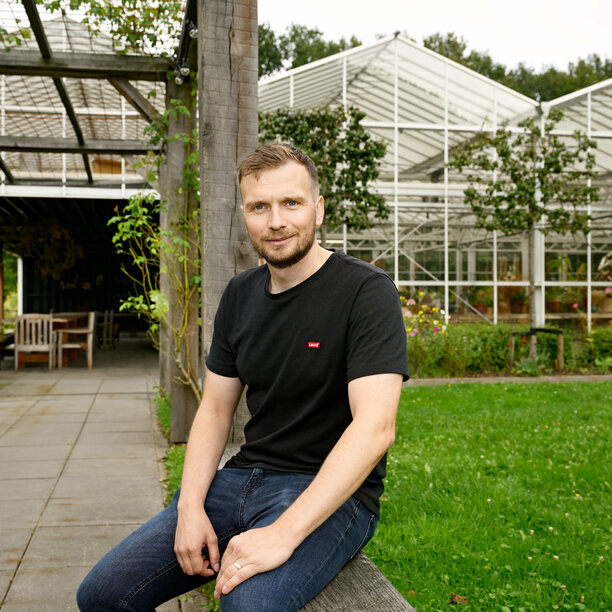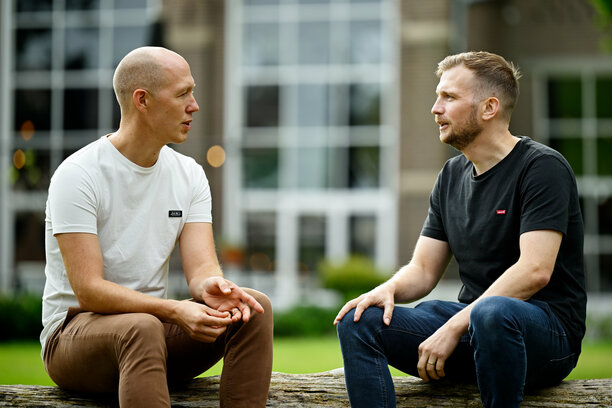For Robin: A brother’s efforts to revolutionize mental healthcare
Sander van den Borne defends his EngD thesis on September 20th at the school of medical physics and engineering Eindhoven, which is part of the department of Biomedical Engineering.
![[Translate to English:] [Translate to English:]](https://assets.w3.tue.nl/w/fileadmin/_processed_/9/a/csm_Sander%20Banner%20Image%20BvOF%202024_0910_AMW_db51fa2112.jpg)
The family of EngD researcher Sander van den Borne know all too well about how a mental disorder can affect a family member. Sander’s sister Robin was diagnosed at an early age and lost her battle with mental disorders at just 19 years old. Motivated by his sister’s story, Van den Borne has developed a technological solution to help doctors and institutes alike to monitor patients taking serious medication for mental disorders.
When Sander van den Borne talks about his sister Robin, all sorts of childhood memories come flooding back.
“When we were younger, we used to get up to all sorts of trouble at home,” says Sander van den Borne about his childhood with his sister Robin with a smile. “We had lots of fun doing it too.”
Van den Borne is an EngD researcher at TU/e and clinical informatician in training at Mental Healthcare Eindhoven (Geestelijke Gezondheidszorg Eindhoven (GGzE)). His EngD programme is known as Clinical Informatics (CI).
In June 2024, Van den Borne took part in TU/e’s science pitching competition Talking Science where he shared an inspiring three-minute pitch about his EngD work. He finished in a well-deserved second in the competition with a pitch based around the life of his adopted sister Robin.
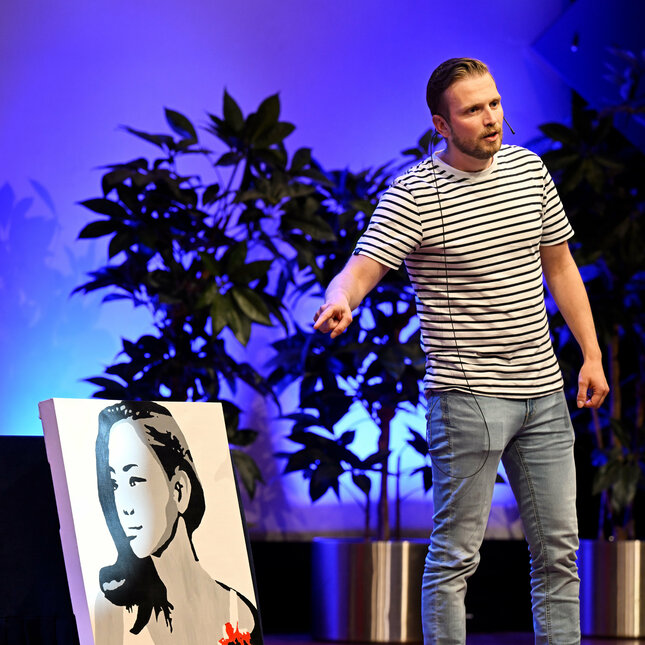
Robin’s life
“At an early age, Robin was diagnosed as being bipolar and she had other mental disorders too. To manage these disorders, she needed to take medication, but as she got older, she refused to take the medication on several occasions,” says Van den Borne.
It was in the late 1990s that Robin was first diagnosed when she lived with Sander and the rest of the family in the small village of Hooge Mierde in North Brabant.
Mental disorders just weren’t spoken about in a small village.
EngD researcher Sander van den Borne
“That was at a time in the Netherlands when it was a taboo to speak openly about such issues,” says Van den Borne. “And in particular, in a small village with a population of about 1,200, this wasn’t something people spoke about.”
The medications that Robin took required constant patient monitoring by the healthcare system. In addition, Robin switched health care providers several times, which led to even more prescriptions too.
“Robin was around 10 or 11 years old when her issues with mental disorders started. Over the years, she took lots of medication and we do know that she often didn’t take them according to the prescription as she got older. Added to this, Robin suffered because the healthcare system at the time didn’t know how to properly treat her disorders.”
Solving a serious issue
Unfortunately for Sander and his family, Robin passed away in 2009 at the age of just 19 years old. “She moved from one healthcare organization to another, and in the end, no one was really able to help her.”
Motivated by what happened to his sister and her illness, as part of his EngD research, Van den Borne set out to assess and solve a serious issue in relation to medications prescribed to patients – patient monitoring.
Need for constant monitoring
“When you look at the medication process now, it could be improved in many ways. For an organization like Mental Healthcare Eindhoven (Geestelijke Gezondheidszorg Eindhoven (GGzE)), the process of monitoring patients is quite difficult, and the organization is looking for new ways to improve this process,” says Van den Borne.
In the case of medications for mental health disorders, monitoring is critical.
Dosing medications
“These medications can be extremely harmful to the body. If a dose is too high, it can lead to death. On the other hand, if the dose is too low it may not treat the disorder, but it can still damage the body. Thus, it’s imperative that the dose is exactly right so that the patient gets the benefit from taking the medication. Nevertheless, certain medications can shorten the lifespan of people by up to 15 years.”
So, when a patient is taking specialized medication, careful monitoring is always needed, but that’s not happening as much as it should.
“My two-year study in the Netherlands confirms results from longer studies in Denmark and Australia – there are many problems with the monitoring process which leads to so-called avoidable incidents or problems. These are problems that could be circumvented with proper and dedicated patient monitoring.”
Manual in the head
Part of the reason for the problem relates to the number of patients that an individual mental healthcare doctor must deal with.
“They have been educated on the standards and have the ‘manual’ in their head. But doctors have more and more patients to manage. Some have doctor assistants, but this introduces another source of human error,” notes Van den Borne.
Data-driven solution
As part of his research, Van den Borne devised a proof-of-concept protocol. The aim of the protocol is to shorten the time for the ordering and assessment of medical tests for someone taking medications that can be harmful, while also making sure the right tests are ordered and results from the tests are communicated on time. If the results are not there on time, the Robin system also notifies the doctor.
“To check on the effectiveness of a medication requires several steps. The main issue is that each of these steps represents a potential point of failure in effective monitoring. So, I sought to automate the process as much as possible using the primary patient registration system of a doctor.”
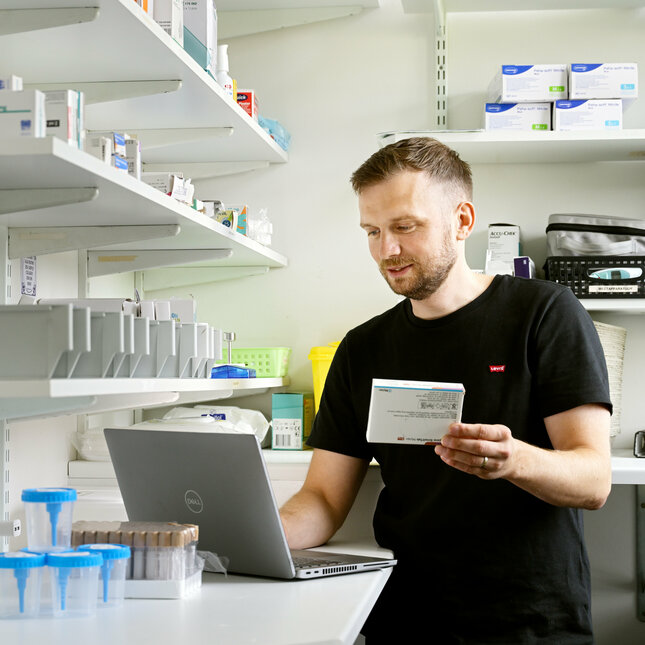
Always the need for doctors
According to Van den Borne, you can never optimize the doctor consultation part out of the medication process. “There will always be a doctor who prescribes medicine. But this step is executed quite well. If the doctor doesn’t issue a prescription, then the patient doesn’t get any medication. The ‘Robin system’ looks at what comes after and depends on lots of data.”
Van den Borne’s Robin system uses data from various sources such as the doctor’s registration and from the repository of ATC (Anatomical Therapeutic Code) classification for medicine.
“An ATC classification is a unique number for the active substance within the medicine. It indicates if a patient with a given condition needs any specific monitoring and care when they are taking the medication.”
In the case of the Robin system, if a patient needs specific tests and monitoring then the system can automate the ordering of any medical tests needed by the patient.
“For example, if a doctor prescribes clozapine (a drug used to manage schizophrenia, psychoses, movement disorders, mania, and depression, ed.), the system will instantly suggest the ordering of tests while the patient takes the medication. The doctor can approve the tests or dismiss them, but for the latter they need to provide a good reason which is noted in the system.”
The system is designed to make the doctor’s job easier.
EngD researcher Sander van den Borne
Besides having access to data on medication and the electronic patient files of the doctor, the Robin system also needs access to data from laboratory testing facilities.
“The system is collecting data on medicines, patients, and lab tests. It’s a lot of data with a lot of variables, which can pose issues for doctors. So, the system is designed to make the doctor’s job easier and ensure that they don’t forget any important patient tests.”

What would Robin think?
Sander’s research journey has been very much influenced by the life of his sister. So, what would Robin think of Sander’s research?
“It would be nice to ask her this question,” says Van den Borne. “Before asking, I’d tell her that I had found a solution to help ensure that she gets the right monitoring for the medication that she’s taking. This minimizes the risk of accidental doses or taking the wrong medication.”
After giving his initial answer Van den Borne pauses for a moment as he realizes something important about his initial answer.
“Thinking about it a bit more, I think Robin might ask ‘Why do you need a solution when I’m receiving the care that I need from a mental healthcare institute?’ As a result, I’d have to back-track a bit in my answer. I’d explain that there are more risks in the medication process than she would assume to be from a patient point of view. I hope my explanation would clarify things for her and that she’d be happy to hear that she’s getting the right medication and the best monitoring possible.”
As we conclude our discussion, Van den Borne reflects on that final question in relation to Robin’s opinion on his research. “It’s nice to think about how I could have helped Robin. With this work though, I get the chance to help others like her who are dealing with similar problems right now. And I think Robin would think it was quite cool to have the system named after her too!”
Media contact
Latest news
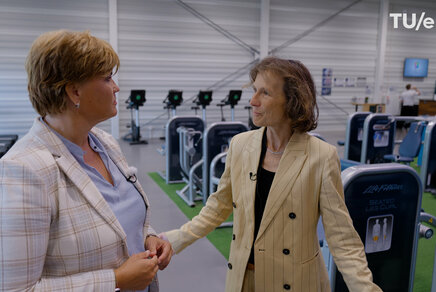
![[Translate to English:] [Translate to English:]](https://assets.w3.tue.nl/w/fileadmin/_processed_/9/a/csm_Sander%20Banner%20Image%20BvOF%202024_0910_AMW_bdd80d45ec.jpg)

